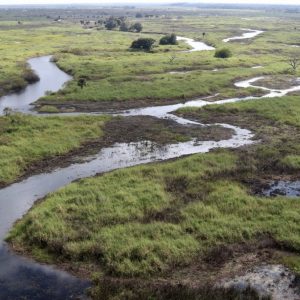The Stream, July 20: Trillions of Dollars at Stake Due to Global Warming
The Global Rundown
New estimates place worldwide financial losses due to global warming by the year 2030 in the trillions. South Africa is rethinking the potential of hydropower. Israeli is continuing to develop desalinization solutions. Southeast Asia is looking like an attractive investment opportunity for U.S. water infrastructure companies. A sacred mountain sits at the center of a Tibet–China water related controversy. An international research team out of Australia has isolated an enzyme that could create more drought resistant crops. Meanwhile, also in AU some are beginning to question the effectiveness of seawalls and other flood mitigating solutions.
“We’re coming up with these hard engineering solutions to fight nature. Artificial headlands, seawalls … they are Band-Aid solutions. The most cautious thing to do would be to maintain proper buffer zones.” –David Hatherly, an acclaimed Queensland architect. Hatherly and others feel moving further inland is the only surefire solution to rising tides around the world.
By The Numbers
$2 trillion Predicted cost of lost revenue due to global warming by 2030. 43 countries may experience economic stress directly tied to increased heat. Already, extreme heat has curtailed annual working hours in some South Asia countries by as much as 20 percent. Additionally, heat stress may increase many countries’ poverty gap, as it is likely to disproportionately effect low-skill, low-paid labor and manufacturing jobs. Bloomberg
55 percent Amount of its domestic water Israel receives from desalination. Giant facilities, like the recently constructed Sorek desalination plant—which supplies 150 million cubic meters of water annually and is the largest reverse-osmosis desalinization facility in the world—are making that possible. Some hope a surplus of avaliable drinking water may lead to a depoliticization of this scarce resource in the region. Ensia
20,000 megawatts South Africa’s recently stated renewable energy capacity goal, as indicated in the country’s new National Development Plan. This objective is causing the government to reexamine the viability of hydropower. Previously, a lack of annual rainfall had caused concerns over how effective hydropower plants could be. However government officials have indicated all alternative energy sources are now back under consideration. IOL
Science, Studies, And Reports
An international team of researchers at the Australian National University has discovered an integral enzyme that could contribute to the creation of drought-resistant crops. The enzyme acts as an alarm sensor, activating during times of extreme stress. Unfortunately the reaction is often triggered after the damaging effects of drought have already begun. Over the next two years, the team hopes to create a chemical spray that will speed up this defensive reaction in important crops such as wheat and rice. Science Daily
On The Radar
Satellite imagery appears to indicate significant upscaling to the Darchen Mineral Water Factory, operated by the Chinese-owned Mt. Kailash Food and Beverage Company, located on Tiebet’s Mount Kailash. A new pipeline may be pulling increased water from nearby sources, causing local concern over the removal’s effect on the surrounding fragile environment. Mount Kailash is also revered as a holy site in Buddhism, Bon, Hinduism and Jainism, and increased noise and pollution from the plant is also reportedly affecting religious pilgrims. The Tibet Post International
The United States, Vietnam and other countries may soon be working together to expand water infrastructure in the Southeast Asian nation. Currently, members from nine U.S. water infrastructure companies are conducting a trade mission to three Southeast Asian countries. During their tour of Vietnam, Singapore and the Philippines they are studying the region’s expanding water infrastructure market and meeting with government and business leaders. Tuoi Tre News
Circle of Blue contributor
Nick is interested in the social and political instability caused by growing global resource scarcity. He is also the director of communication at On the Ground, an international aid and development NGO that supports sustainable community development in farming regions.





